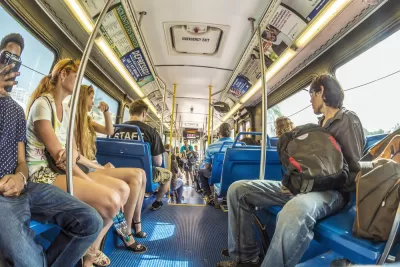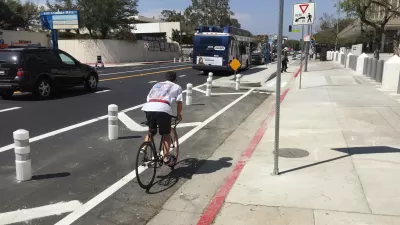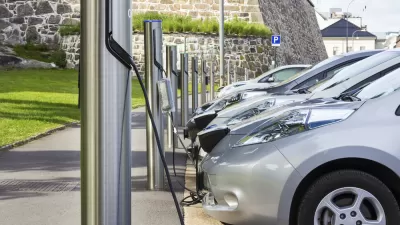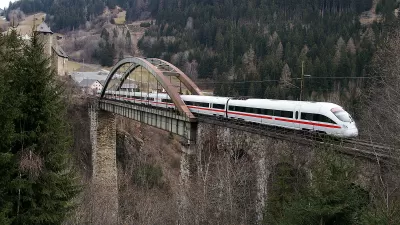Electric cars may garner a lot of attention these days, but significantly reducing carbon emissions and urban congestion means investing in high-quality mass transit.

Andrew J. Hawkins argues in favor of boosting public transit as a crucial way to fight climate change, warning against the potential "death spiral" caused by declining ridership which reduces revenue, leading to worse service which discourages riders even further. As Hawkins writes,
There’s more at stake than good buses and trains. The recent report from the United Nations Intergovernmental Panel on Climate Change confirms that a hotter, wetter, more inhospitable future is all but certain. The transportation sector is responsible for nearly a third of greenhouse gases, most of which come from tailpipe emissions. High-quality mass transit can do a lot to fight climate change, but only if people are willing to use it.
Since the start of the pandemic, transit agencies have struggled against a raft of challenges as some riders abandon their systems while essential workers and other transit-dependent commuters rely on public transportation more than ever. Agencies around the country are implementing major service changes and reducing or eliminating fares in an effort to get riders back on board and expand the reach of their systems, with mixed results. These initiatives will create more benefits than just improved transit service for those who use it, transit supporters argue. As Hawkins concludes, "high-quality transit is the only real solution to our vast, seemingly intractable problems with climate change, inequality, land use, and housing."
FULL STORY: PUBLIC TRANSPORTATION CAN SAVE THE WORLD — IF WE LET IT

Alabama: Trump Terminates Settlements for Black Communities Harmed By Raw Sewage
Trump deemed the landmark civil rights agreement “illegal DEI and environmental justice policy.”

Planetizen Federal Action Tracker
A weekly monitor of how Trump’s orders and actions are impacting planners and planning in America.

Why Should We Subsidize Public Transportation?
Many public transit agencies face financial stress due to rising costs, declining fare revenue, and declining subsidies. Transit advocates must provide a strong business case for increasing public transit funding.

Understanding Road Diets
An explainer from Momentum highlights the advantages of reducing vehicle lanes in favor of more bike, transit, and pedestrian infrastructure.

New California Law Regulates Warehouse Pollution
A new law tightens building and emissions regulations for large distribution warehouses to mitigate air pollution and traffic in surrounding communities.

Phoenix Announces Opening Date for Light Rail Extension
The South Central extension will connect South Phoenix to downtown and other major hubs starting on June 7.
Urban Design for Planners 1: Software Tools
This six-course series explores essential urban design concepts using open source software and equips planners with the tools they need to participate fully in the urban design process.
Planning for Universal Design
Learn the tools for implementing Universal Design in planning regulations.
Caltrans
Smith Gee Studio
Institute for Housing and Urban Development Studies (IHS)
City of Grandview
Harvard GSD Executive Education
Toledo-Lucas County Plan Commissions
Salt Lake City
NYU Wagner Graduate School of Public Service





























